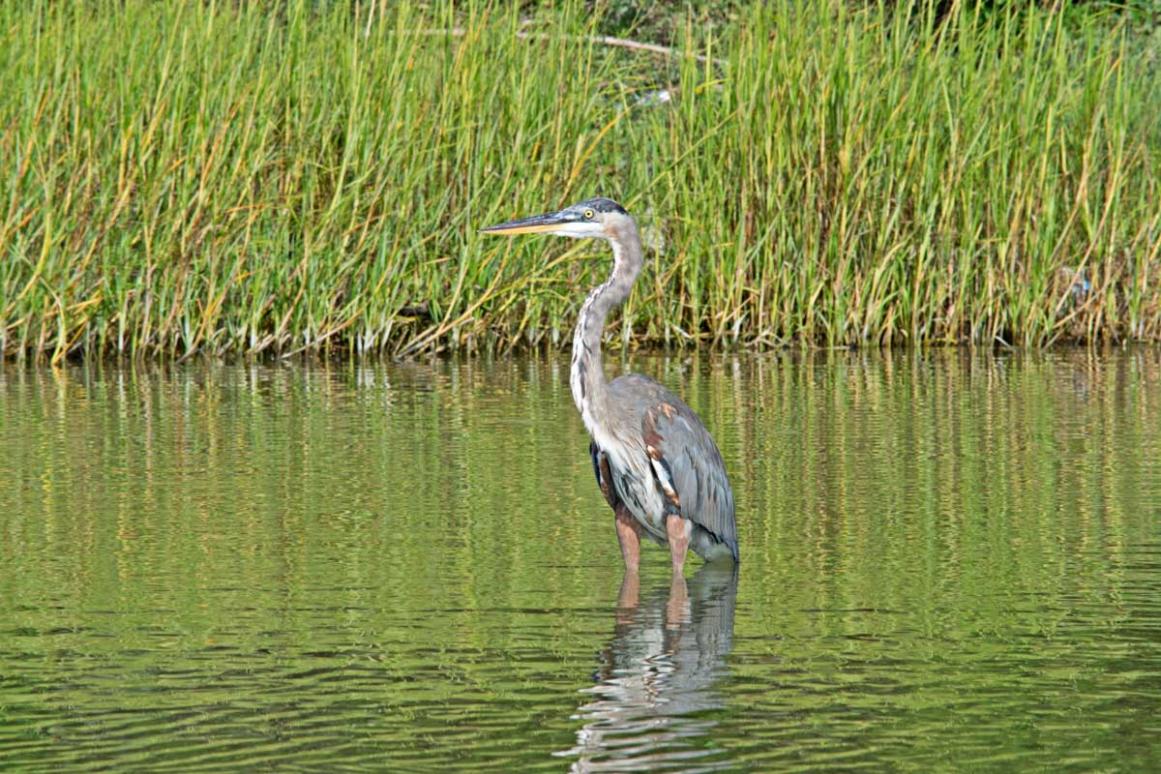Texas’ Top Marine Scientists Rate the Coast a B- for Environmental Health

Download the Expanded Report Card
- Oyster reefs are among the most threatened marine habitats, and are struggling to come back from Hurricane Harvey
- Seagrasses in Baffin Bay and Upper Laguna Madre are impacted by poor water quality, including harmful algal blooms
- Several Texas coastal fisheries have rebounded thanks to new science-based fisheries management and conservation techniques
CORPUS CHRISTI, Texas — How healthy is the Texas Coast? The Harte Research Institute for Gulf of Mexico Studies at Texas A&M University assembled a team of top marine researchers who studied the data to assign a letter grade to our coast’s wellbeing.

The verdict? Texas’ coast overall gets a B minus. But the team also drilled down to look at individual sections of the coast and several habitats and species that earned their own ratings. The report card, a more detailed breakdown of the findings and ratings graphics are available for download below.
“The Texas coast is long and diverse, making any general statement about its health difficult. It took a lot of study and no little debate to reach a conclusion,” said Dr. Larry McKinney, Senior Director of the Harte Research Institute and lead for the project. “Considering how fast it is growing and all the pressures on it, I think the Texas coast is in surprisingly good health.”
THE FINDINGS:
The “Texas Ecosystem Health Report Card” was developed using a series of key indicators to take the measure of the overall environment, including: water quality, fisheries, birds, seagrass and oysters.
The Report Card Team also divided the coast into four regions: the Upper Coast, Galveston Bay and Sabine Lake; the Mid Coast, Matagorda Bay to Corpus Christi Bay; the Upper Laguna Madre, including Baffin Bay; and Lower Laguna Madre from Landcut to Brownsville. The report card team then brought together the key indicator assessments on this regional scale to provide a more detailed report for each of the four coastal regions:
The Upper Texas Coast: C+. Oysters got the worst rating; their populations have been decreasing over time and fell sharply after Hurricane Harvey as the storm’s heavy rains filled the bays with freshwater. But fisheries and water quality are holding up well despite growing pressures.

The Texas Mid Coast: B. Fisheries health buoyed up the respectable grade for this part of the coast. Water quality and birds are doing well but oysters and seagrass scored only moderately healthy. A long-term increase in salinity due to decreasing freshwater inflow poses a threat to the health of Mid Coast waterbodies.

The Upper Laguna Madre: C-. The lowest rating of the four Texas coastal regions. Fisheries scored well, and birds are also considered in good health. But declines in seagrasses and water quality, especially in Baffin Bay, drove the overall score down. Declining water quality is linked to nutrient pollution and persistent algal blooms.

The Lower Laguna Madre: A. In contrast to its northern extension, Seagrass and water quality, along with fisheries are in very good health here. Birds are doing well.

THE REPORT PROCESS:
HRI’s team of Texas experts worked with some of the world’s leading experts on ecosystem health assessment and communication who have produced report cards for the Great Barrier Reef in Australia, Chesapeake Bay, the Mississippi River, the Everglades in Florida and other significant marine ecosystems around the world. The goal was to create a report card that is as useful to the public as it is to resource managers, political leadership and scientists.
“We adopted what we came to call a wedding cake structure when assembling the data and information on which we based the report card,” McKinney said. ”The base layer is the largest and most dense, filled with data and peer reviewed reports. Successive layers are more summarized and aimed at specific users but everything our experts used or developed and on which we based our grades, can be accessed by anyone in as much detail as they might wish.”
Dr. Jennifer Pollack, HRI Chair for Coastal Conservation and Restoration, is the state’s leading expert on oyster ecosystems and restoration and she led the team assessing oyster health.
“Putting together the report card was a great opportunity to step back from work on specific projects and take a holistic view of oyster health along the Texas coast,” Pollack said. “Getting together with my colleagues to compare notes is a rare opportunity and helped put what we are doing into perspective. It is good to know that what we are doing helps our coast and those who depend on it be healthy and productive,” she concluded.
WHAT NEXT?
The Texas Report Card is the first step in a larger HRI effort to develop a Gulf of Mexico Report Card. Related efforts have been completed for the Yucatan, Mexico and are being developed in Cuba. HRI is working with partners at the Water Institute of the Gulf, based in Louisiana, to launch the Gulf-wide project. Additional indicators for emergent wetlands and coral reefs are also being developed.
The goal of the Gulf of Mexico Report Card is to provide an objective assessment for the health of the Gulf of Mexico, beyond that of an individual project scale. The project builds on stakeholder values established during the EcoHealth Metrics Project, a partnership between HRI, Harwell Gentile and Associates, and the University of Maryland Center for Environmental Science.
“We are in the process of spending billions of dollars from the Deepwater Horizon settlement restoring the Gulf and it is important that we have a tool that can help us evaluate progress and make course corrections on a significant scale,” McKinney said. “No one has attempted something of this scale, but the Gulf of Mexico is our nation’s most valuable marine ecosystem and vital to nations well-being. We need this tool to track its changing condition to make sure we keep it healthy and productive.”
